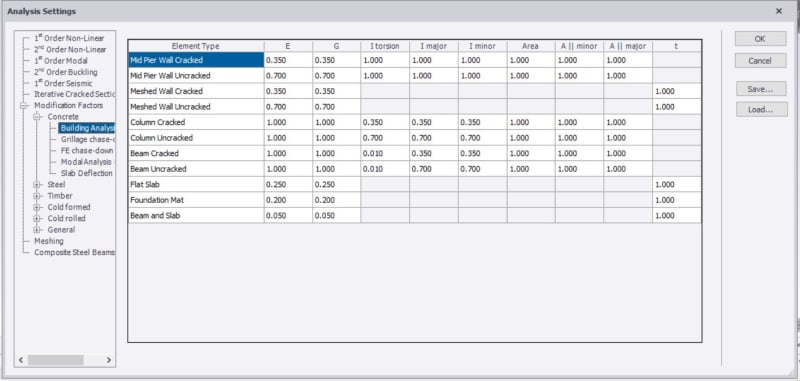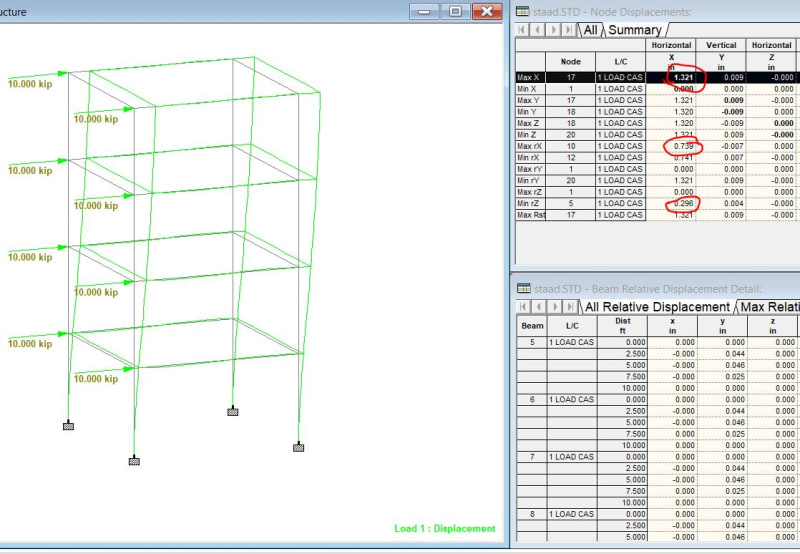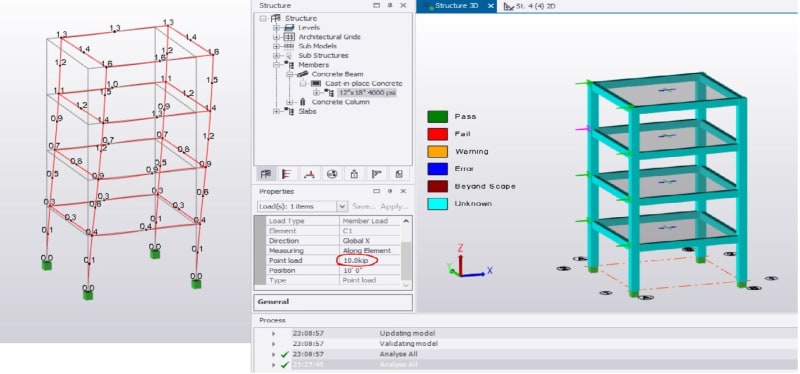I have been using ETABS for ages, and the results are always books perfect. I was introduced to Tekla Structural Designer, i like the interface and many aspects about it, but one thing is amazing me, The huge difference in deflections between ETABS and TSD, am i doing something wrong ? or is TSD getting it completely wrong ?
both the models are here. i have verified forces again and again but the difference is huge in both software.
tekla : 1.8in
ETABS : .14in
Link
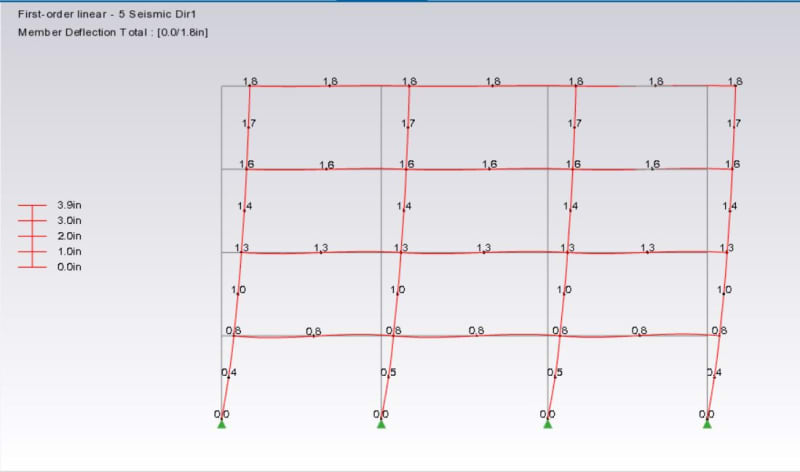
ETABS
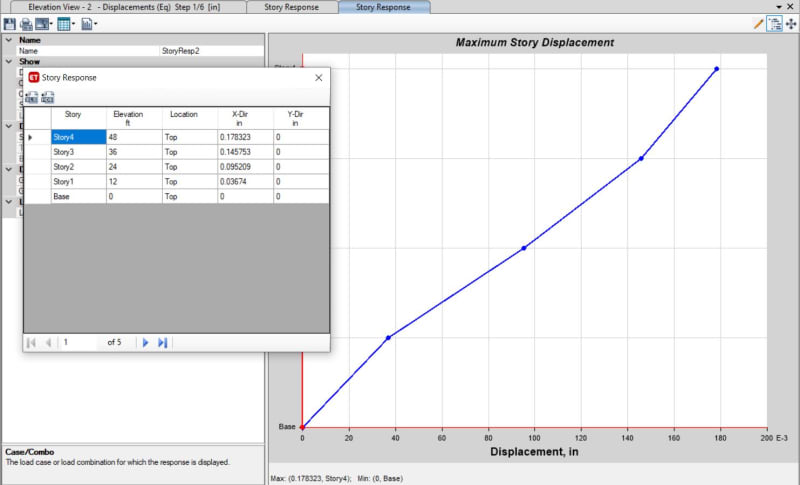
both the models are here. i have verified forces again and again but the difference is huge in both software.
tekla : 1.8in
ETABS : .14in
Link

ETABS


